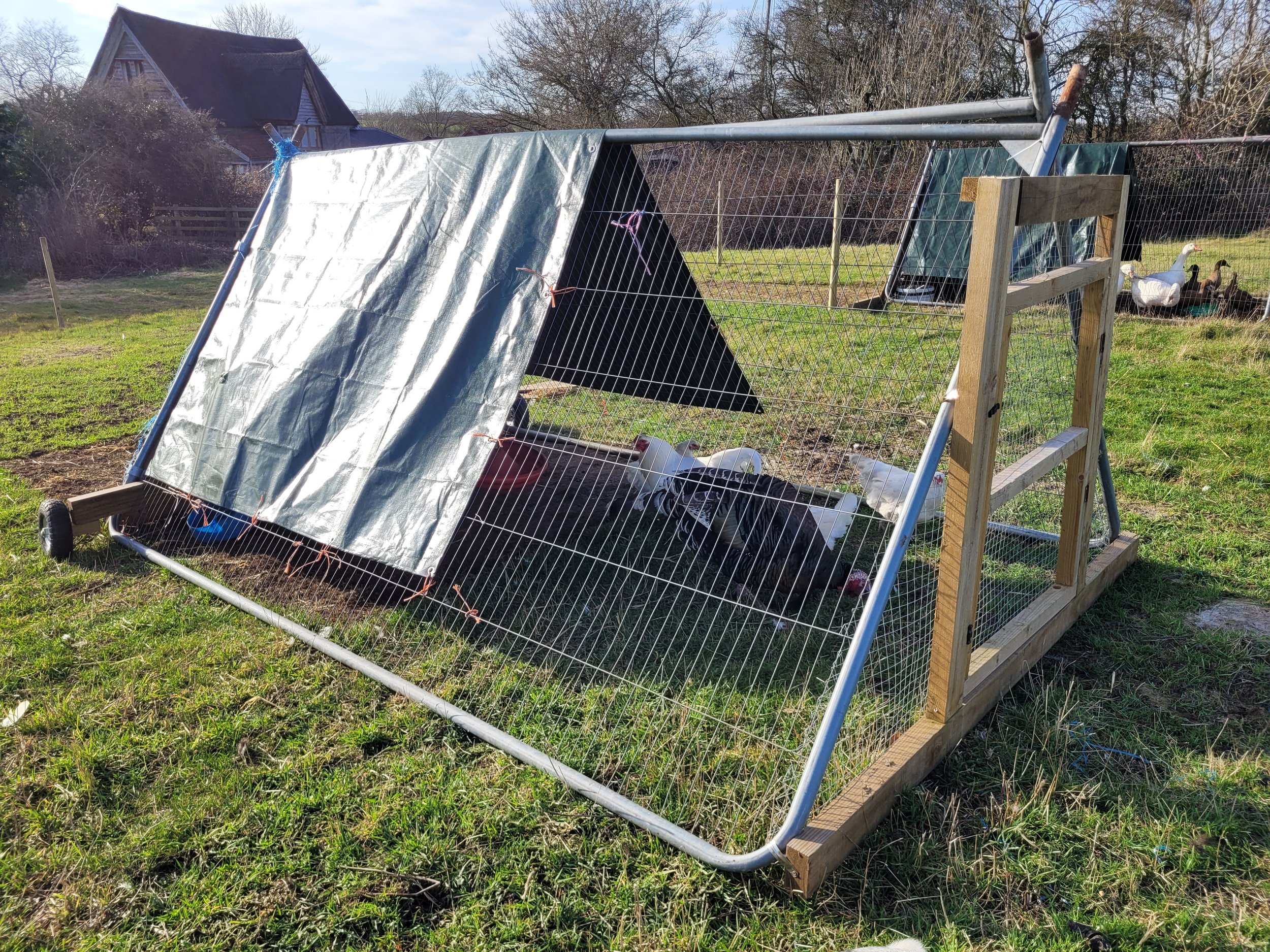Building a Mobile Chicken Coop & Chicken Tractor UK Version
I love a mobile chicken coop and have long been a fan of the models used in the US. However, unfortunately for us UK folks, a lot of those chicken tractors use cattle panels and the like for the main build; components we just don’t have. So, with some inspiration from Kev Alviti over at An English Homestead, I went about making some of my own from Heras fencing.
Heras panels are traditionally used for construction site fencing. They come with clips and large, weight blocks to move one long, sturdy perimeter boundary for places such as housing developments or road maintenance works. However, they are also ideal for building a mobile chicken tractor as they’re light, moveable and you only need two at a time.
Now, I am not someone who’s very good at DIY so I needed to make it SUPER easy on myself. As you can see from the picture below, it’s a very simple yet effective design.
Two heras panels are connected into a V shape and I simply used baling twine (as a farmer I couldn’t use anything else, right?) to hold them together. A sheet of sterling/OSB board is then used as the main structure on the back of the coop, whilst two lengths of 2 by 4 are used at ground level; one at the back for the wheel supports and one at the front as a base frame for the door. To make it even easier, I made the door a simple square on front of the panels rather than trying to cut and shape an angle door to fit into the V. Any additional holes are filled using standard aviary mesh.
As shown in the picture above, the OSB is cut to fit the shape of the V and I then used ‘P clips’ to fix the board into place and make the entire structure rigid. You can get these on Amazon and you need a 60mm width one to fit around the tubing of the panel - be sure to remember to get a nut and bolt too! Close up, they look like this:
Once you’ve attached the back board, the structure will become fairly rigid. You can then start to think about the front door. I used fairly decent off-cuts of 2 by 1 for the chicken door but had run out of scrap by the time I got to the duck one and ended up making it out of pallet wood. Both worked out fine as you can see from the images below. I simply used a couple of door clasps to hold them shut and to fix them onto the heras panel I used these saddle clips from Amazon. I have to admit, they’re a little weak - they haven’t snapped, but have warped so you might want to find something a little more rigid.
The final step is to add a couple of wheels, for which I bought these four from Amazon. On the initial mobile chicken tractor, I used a drill-bit to hollow out a sizeable hole in each end of the 2 x 4 baton at the back of the coop. I then found a suitable bolt, put it through the wheel and used a hammer to smack it into place.
This has worked well BUT requires new tyres for every coop. If you look closely at the back of the coop (pictured above) you can also see that I put the piece of wood through the heras panel itself meaning the wheels sit almost level with the backboard. This is rather troublesome when moving it as the mobile chicken tractor doesn’t lift far enough above the ground.
On the second attempt, I attached the baton to the back of the OSB on the outside right at the bottom. Every time I want to move the coop, I simply slot the wheels into the holes which gives a few additional inches of height and moves the board off the ground. It’s then far easier to move. I hope this makes sense!
Currently I’m moving the coops by hand, simply bending down and tucking my fingers under the door frame and then dragging. However, if you can find a second-hand sack trolley, this would be an ideal way of lifting and moving the coop for even less effort.
I hope the above all makes sense; if not, let me know. Happy chicken tractor building!










